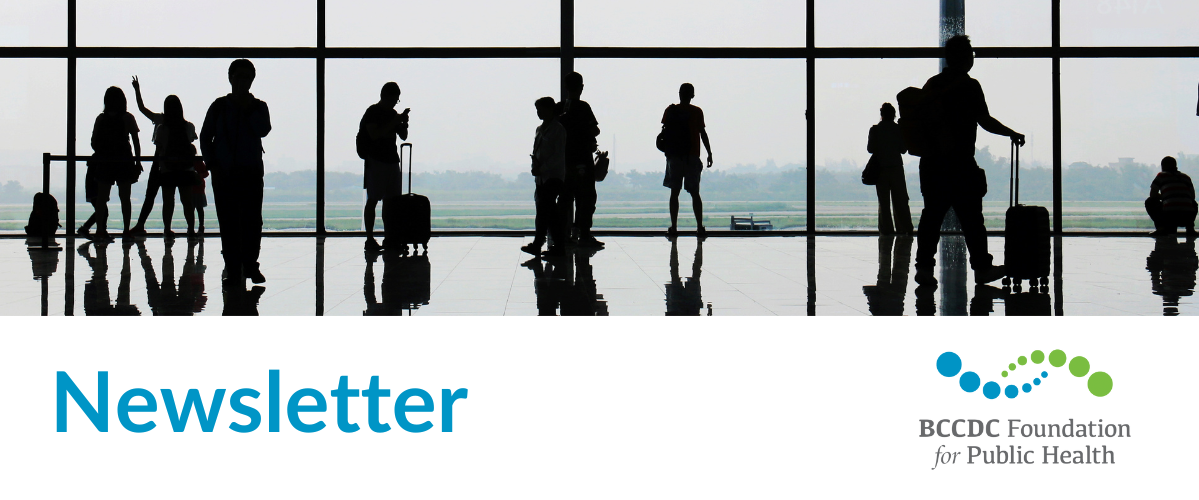Public health functions include health protection, promotion, and prevention; preparedness and response; and surveillance and monitoring. Public health is also responsible for enabling, and advocating for, policies and interventions that strengthen positive health. These functions contribute to the public health sector, which is not the same as our publicly-funded healthcare system in Canada. While the two systems work in synergy and are both clearly vital to society, unfortunately, most investment goes to the latter.
But what if we focused more action on preventing illness and injury, protecting people, and promoting environments that foster well-being?
We would be thinking and working upstream. We would be starting early with health promotion, addressing determinants of health, and fostering resiliency. We would start when people are young, start ‘upstream’ in their development, and build healthy resiliency and well-being.
This is why youth mental health is a priority for us, and why we are funding urgent and important work in the area.
Youth Mental Health: A Wise Upstream Investment
Adolescence is an important developmental stage and positive well-being during this time sets the stage for long-term health outcomes and better quality of life. Before the pandemic, youth mental health was declining. Growing evidence — including stories from youth themselves — of the unintended consequences of the last few years is showing damaging effects to youth mental health, and data from BC’s SPEAK surveys shone an important light on the fact that youth mental health deteriorated during the pandemic.
Evidence like this provides the context in which we can play a role and why we partnered with Vancouver Coastal Health and the Public Health Association of BC (PHABC) to advance this critical area. We funded a project that included a large provincial Best Brains Exchange forum, as well as regional discussions, and evaluated evidence-based global mental well-being interventions, to assess the feasibility and practicality of these throughout our BC communities. This important conversation brought many voices together, including BC’s regional health authorities, medical health officers, and of course, and perhaps the most important participants, youth.
“We’re very grateful to Pacific Public Health Foundation for this opportunity because we think there is a window here for that burning platform that really sees a shift for child and youth mental health. And not just to focus on once the damage is done, but what are we doing to protect children? Upfront, upstream, and create conditions that lead them to fulfill their potential.” – Shannon Turner, Executive Director, PHABC
Youth were delightfully engaged and eager to share their concerns about how climate change, the toxic drug poisoning crisis, and worry about a future pandemic affect their mental health and well-being.
Uniting As a Province Toward a Common Goal
When we get our provinces’ best brains together, the possibilities are endless. The Best Brains Exchange uncovered a complex web of roles and relationships required to support child and youth mental health in BC — there’s a need for a collaborative approach spanning across sectors. Through joint efforts, leadership across health authorities recognized the importance of uniting agencies to address the growing mental health challenge, which includes focusing on positive well-being and creating protective and promotive factors through mental health promotion strategies that help youth thrive.
Emerging from the Best Brains Exchange were several key principles and approaches that together create a path forward. One key message is that a paradigm shift is needed, whereby the focus on preventing mental illness must be balanced with a positive understanding of mental health and wellness. Additionally, investments in this area must include an understanding of specific types of approaches and interventions that work, ones that include youth engagement, voices, and empowerment.
The Best Brains Exchange and subsequent regional discussions led to an improved understanding of the pandemic’s impact on youth mental health and wellbeing. It established a community of practice and a provincial framework to guide future programs and initiatives tailored to the diverse needs of communities across our province, including several key recommendations. Grounding our work in a population mental wellness approach, directing adequate resources to support research and evaluation, joining forces with the education sector, addressing mental health for equity-deserving groups, and collaborating with Indigenous communities are just a few.
The Future Looks Bright for Youth in BC
Leaders in this space, including youth, envision a landscape grounded in the socioecological model — a realm where children flourish within families, communities, and society, supported by systems that nurture growth, agency, and security.
Promoting youth well-being grounded in equity, the determinants of health, reducing stigma, supporting harder to reach populations, creating resiliency, and incorporating Indigenous perspectives of health and ways of knowing remains an upstream approach that we’re proud to invest in.



